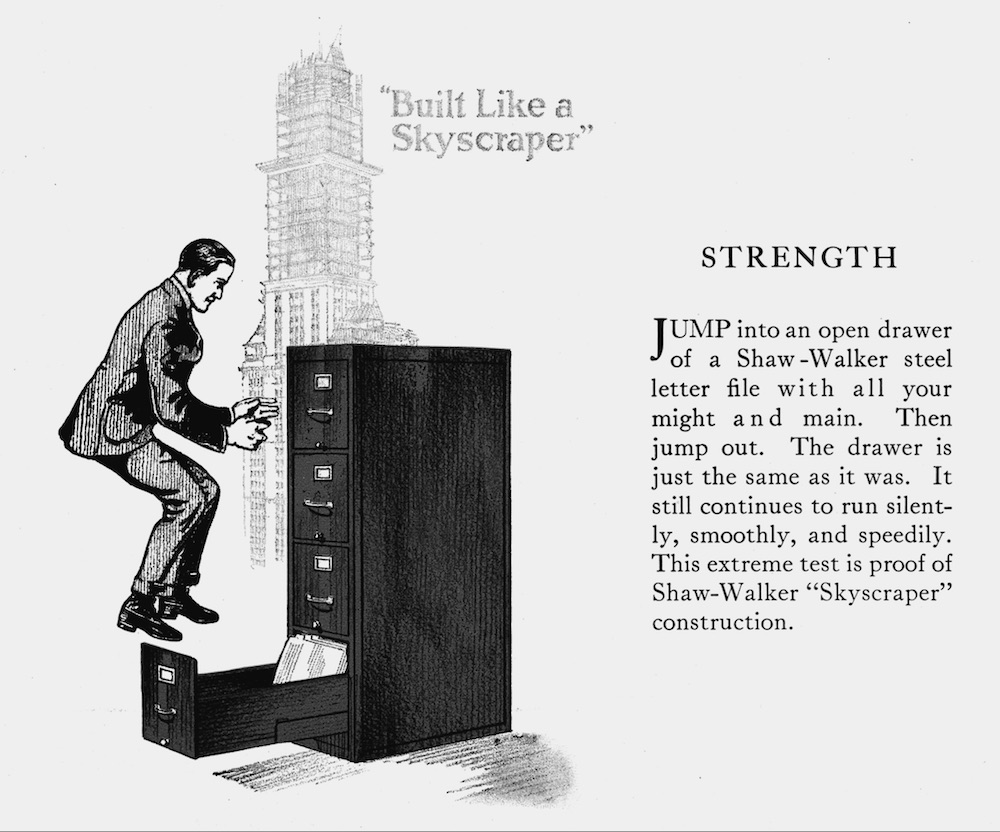
In this programme we’re looking at what I used to think of as ‘the humble filing cabinet’ until I read Craig Robertson’s fascinating book, The Filing Cabinet: A Vertical History of Information (University of Minnesota Press, 2021). It’s easy to regard filing cabinets as space-hogging lumps of metal from a bygone era standing inert in the corner, filled with dusty files; an antiquated, time-consuming, inefficient way of storing information, obsolete now that our data lives in the cloud.
But previous generations thought of their data as ‘live’ too, and a century or so ago, filing cabinets were being marketed as the essence of modernity and business efficiency, the very heart of the modern office – or perhaps more accurately, its brain.
Then, information meant paper, and information was knowledge that could be turned into profit. Swift access to the right document at the right time was critical. Accessibility was key.
Craig Robertson writes:
The idea that paper was ‘live’ spoke to the need to prioritize accessibility and retrieval to ensure that paper and information flowed through an office. This countered the idea that storage was passive or that paper once stored was dead, that it could not be found. Even when stored in a filing cabinet, it was placed standing to attention where it could be found easily in the future.
Craig is clearly fascinated by the detail of the history of the filing cabinet – he writes: ‘I look at drawer slides, folders, tabs, and steel to appreciate how the filing cabinet works’ – but he’s also really interested in, and interesting on, the big picture revealed by paying attention to filing cabinets’ history. As you’ll hear, without stretching the point, they raise questions of gender, race, and capitalism as well as the meaning of work.
The filing cabinet was invented in the United States in the 1890s and quickly became a fixture in offices in North America and elsewhere. When I spoke to Craig, I thought a good place to start was with what came before the filing cabinet, the 19th-century method of storing paperwork that the filing cabinet would sweep away…
